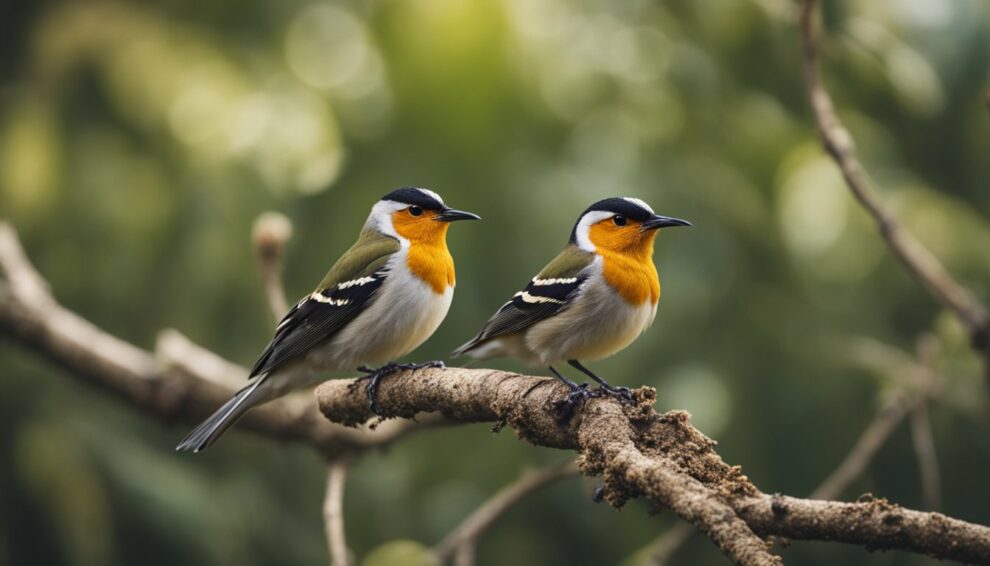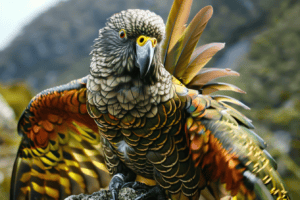Imagine a bird delicately picking up ants and then, in a somewhat unexpected spa treatment, briskly smearing them all over its feathers.
This odd activity is called anting, and it’s something that many different bird species around the world have been observed doing.
Why engage in such a quirky behavior?
While the exact reasons are still a bit mysterious, one popular idea suggests it might be a clever way for birds to keep pesky parasites at bay.
Ants produce formic acid, which could act as a natural insect repellent, ensuring the bird’s feathers stay healthy and free of unwanted bugs.

This peculiar ritual has puzzled scientists and bird enthusiasts alike.
Anting takes various forms: some birds lie down and allow ants to swarm over them, while others perform a more active role by grabbing the ants and applying them like lotion under their wings.
What’s clear is that birds do seem to benefit from this behavior in some way.
When the anting episode is over, they typically gobble up the ants—a crunchy and presumably satisfying end to their unique version of a bath time ritual.
Unraveling the Mystery of Anting
Birds have captivated our attention with a peculiar behavior known as anting, where they appear to use ants in grooming rituals.
Scientists are piecing together the reasons behind this unique interaction between birds and ants.
What Is Anting?
Anting is an activity some birds partake in which involves using ants to maintain their plumage.
Typically, a bird will grab an ant and deliberately rub it on its feathers.
The most intriguing part of the process is that they largely select ants that produce formic acid.
This chemical is a powerful compound the ants use for defense, but when it comes to birds, it might just serve an entirely different purpose.
Types of Anting Observed
Bird-watchers have noticed two primary forms of anting.
Some birds apply living ants that release their formic acid when pressed against feathers, a behavior perhaps aimed at keeping pesky parasites at bay.
Other birds prefer a more passive approach, lying down and allowing ants to roam freely through their feathers, which could be another way for birds to borrow the benefits of formic acid.
The species involved in anting are diverse, ranging from songbirds like blue jays to others out of the more than 200 species documented worldwide.
As for the ants themselves, not just any ant will do.
Birds tend to favor those from the Formicinae, Dolichoderinae, and Myrmicinae subfamilies, known for their formic acid production.
One might wonder, do the ants know they’re part of this feather-freshening routine, or is it all just a curious case of nature’s chemistry at work?
The Science Behind Birds’ Use of Ants

Birds have developed a curious and intricate relationship with ants that intrigues scientists and bird enthusiasts alike.
This symbiotic interaction appears to play a significant role in birds’ daily routines of feather maintenance and health management.
Feather Maintenance and Preening
Birds are meticulous groomers, and the state of their feathers is a prime concern, especially during molt when old feathers are replaced by new growth.
Through preening, birds distribute preen oil from a gland at the base of their tail across their feathers.
This oil keeps their feathers supple and in good condition for flight.
During preening, some birds actively engage in a process known as anting, where they pick up ants in their beaks and spread them over their plumage.
The ants release formic acid, which may aid in the enhancement of the protective properties of preen oil.
When a bird bathes in ants, it disrupts the insects, causing them to spray or release defensive chemicals such as formic acid.
Scientists believe this may help to further condition the birds’ feathers, as formic acid can act as a fungicide and bactericide, providing an added layer of cleanliness to the already detailed process of preening.
Ants as Parasite Protectors
The anti-parasite hypothesis is one of the leading explanations for why birds engage in anting.
Birds face a constant battle with a host of tiny foes like feather mites and other ectoparasites that can damage their feathers, irritate their skin, and impact their overall health.
By applying ants to their feathers—either directly or by lying on the ground and allowing the ants to swarm them—birds might be utilizing the ants’ chemical defenses as a means to control these unwelcome parasites.
While the behavior clearly indicates that ants play a role in birds’ parasite management, the full extent to which anting contributes to deterring feather mites and other parasites is still under investigation.
Researchers suggest that, beyond the release of formic acid, the physical movement of the ants may help dislodge or ward off these persistent pests, making anting akin to a feathered friend’s mini spa treatment.
Through these behaviors, birds demonstrate an innovative use of their natural environment to support their health and hygiene, a testament to nature’s interconnected brilliance.
As research continues, the enduring curiosity of why birds bathe in ants serves as a reminder that even the smallest creatures and actions have their place in the tapestry of the ecosystem.
Bird Behavior and Adaptations

Birds have evolved a remarkable range of behaviors to adapt to their environments, with some instincts being hardwired from birth while others are learned through experience.
One peculiar behavior that intertwines instinct with adaptation is anting, a ritual where birds may use ants or other materials to maintain their plumage.
Natural Instincts and Learned Behaviors
From the moment a chick breaks through its shell, it is guided by instincts—a set of behaviors vital for survival, such as feeding or fleeing from predators.
As birds grow, they acquire a complex array of behaviors through watching and mimicking, a process scientists have spent countless hours observing.
Active anting is one such intriguing behavior where a bird purposefully picks up ants and rubs them over its feathers and skin.
In contrast, passive anting sees birds lying down on the ground, allowing ants to swarm them.
This is not mere avian whimsy—researchers suggest these are learned behaviors that birds might pick up by seeing other birds engage in the act.
Have you ever considered why a bird might bathe in a swarm of ants?
Well, some scientists theorize that the ants’ formic acid helps birds battle skin irritations or deter pesky parasites.
Imagine you’re using lemon juice as a natural cleanser; it’s somewhat similar for the birds!
The Role of Environment in Anting
The environment plays a crucial theater for the spectacle of anting.
Various factors such as temperature and humidity can influence a bird’s decision to commence this peculiar bath time.
For instance, a dry, hot day might prompt a bird to indulge in dust anting as a substitute, rolling around on the parched ground to achieve the same alleged benefits that anting with live ants might provide.
Quantitative data collected by keen-eyed researchers have pointed toward this behavior being particularly adaptative.
Birds may select anting as a means to cool down or keep their feathers in top shape amid varying environmental pressures.
But let’s not forget, while scientists can provide us with heaps of data through their dedicated observation, sometimes nature retains a slice of mystique.
So even as we learn more about these remarkable behaviors, there always seems to be a little more to uncover.
The artful dance of bird behavior, a mix of inherent wisdom and learnt finesse, brings us closer to understanding the sophisticated world of our avian friends.
Whether they’re basking in a brigade of ants or turning the soil in search of a dust bath, there’s always a bit of practical magic at play.
Frequently Asked Questions

This insightful section covers some of the most curious inquiries about the intriguing practice of anting in birds.
How do birds use ants to keep clean?
Birds engage in a peculiar behavior where they pick up ants and rub them over their feathers and skin.
It’s thought that the formic acid produced by the ants helps them get rid of pesky parasites and maintains their plumage in tip-top condition.
Can you list some types of birds that participate in anting behavior?
Sure! Many bird species, including jays, magpies, and starlings, have been observed performing anting.
This behavior isn’t restricted to a single family or group of birds but is quite widespread across the avian world.
What’s the purpose of a bird ‘bathing’ in ants?
When birds ‘bathe’ in ants, they’re not just having a fun time!
They may be using the ants as a way to deter skin parasites or soothe irritation.
Scientists are still piecing together the reasons for this behavior, but it certainly helps keep the birds more comfortable.
Is it true that ants can actually bite birds during anting?
Yes, ants can indeed bite birds while they’re busily anting away.
However, birds seem willing to tolerate these bites to benefit from the ants’ secretions, which can act as a bug repellent for their feathers.
Why do some birds seem to love lying on anthills?
Lying on anthills can seem like a peculiar spa day for birds, but they might be doing so to invite ants onto their bodies.
The ants’ movements may simulate preening, or their acidic secretions might help the birds with their feather maintenance.
Do birds intentionally eat ants during the anting process or does that happen by accident?
Birds might gobble up a few ants during their anting session – this could be intentional or accidental.
While their main aim is to benefit from the ants’ formic acid, snagging a snack in the process could just be an added bonus.









